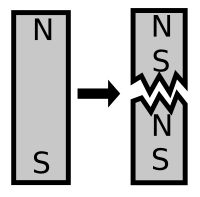
Photo from wikipedia
Charge order is now accepted as an integral constituent of cuprate high-temperature superconductors, one that is intimately related to other electronic instabilities including antiferromagnetism and superconductivity1–11. Unlike conventional Peierls density… Click to show full abstract
Charge order is now accepted as an integral constituent of cuprate high-temperature superconductors, one that is intimately related to other electronic instabilities including antiferromagnetism and superconductivity1–11. Unlike conventional Peierls density waves, the charge correlations in cuprates have been predicted to display a rich momentum space topology depending on the underlying fermiology12–18. However, charge order has only been observed along the high-symmetry Cu–O bond directions. Here, using resonant soft X-ray scattering, we investigate the evolution of the full momentum space topology of charge correlations in T′-(Nd,Pr)2CuO4 as a function of electron doping. We report that, when the parent Mott insulator is doped, charge correlations first emerge with full rotational symmetry in momentum space, indicating glassy charge density modulation in real space possibly seeded by local defects. At higher doping levels, the orientation of charge correlations is locked to the Cu–O bond directions, restoring a more conventional long-ranged bidirectional charge order. Through charge susceptibility calculations, we reproduce the evolution in topology of charge correlations across the antiferromagnetic phase boundary and propose a revised phase diagram of T′-Ln2CuO4 with a superconducting region extending toward the Mott limit.A new form of charge ordering is observed in a cuprate superconductor. At low doping, a fully rotationally symmetric ordering appears before becoming locked to the Cu–O bond directions at high doping. The link between charge correlations and fermiology give a perspective on the phase diagram.
Journal Title: Nature Physics
Year Published: 2019
Link to full text (if available)
Share on Social Media: Sign Up to like & get
recommendations!